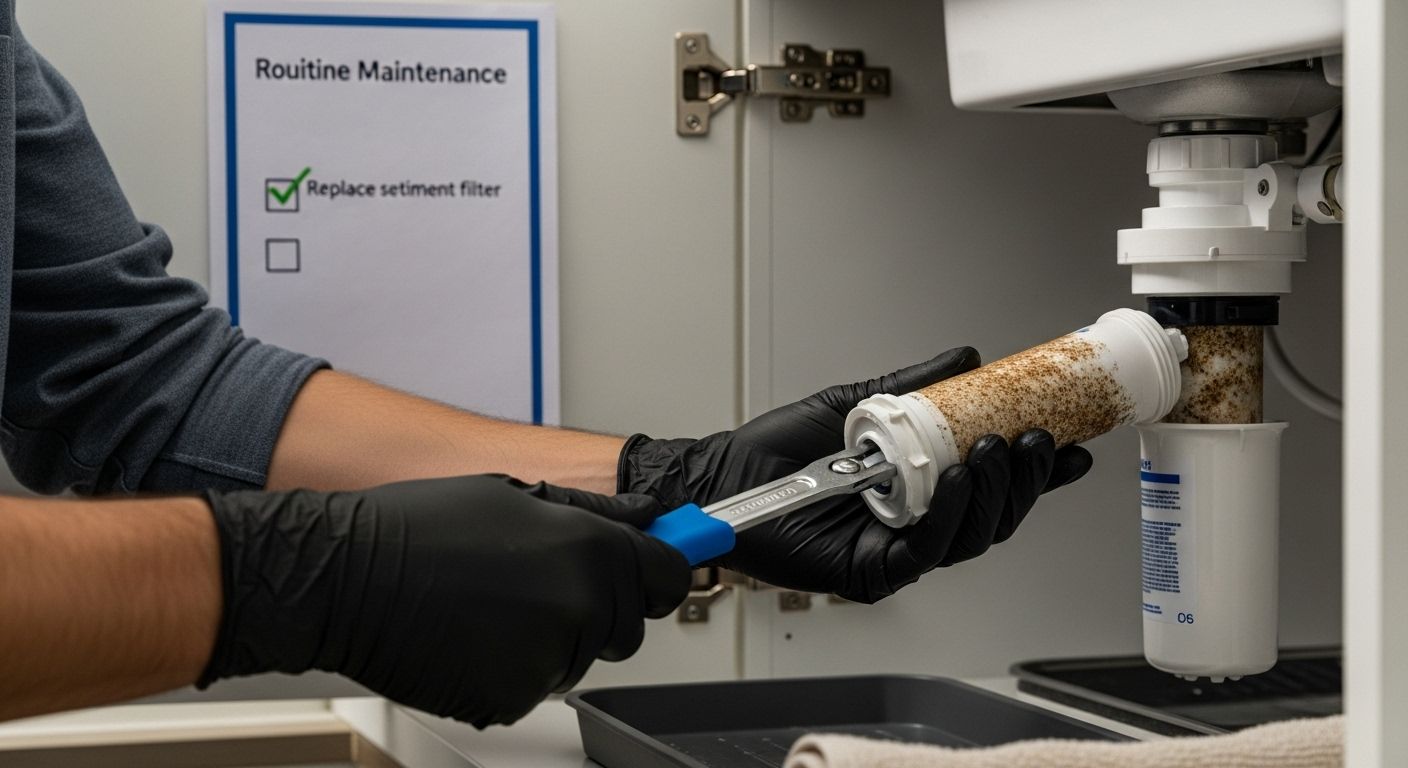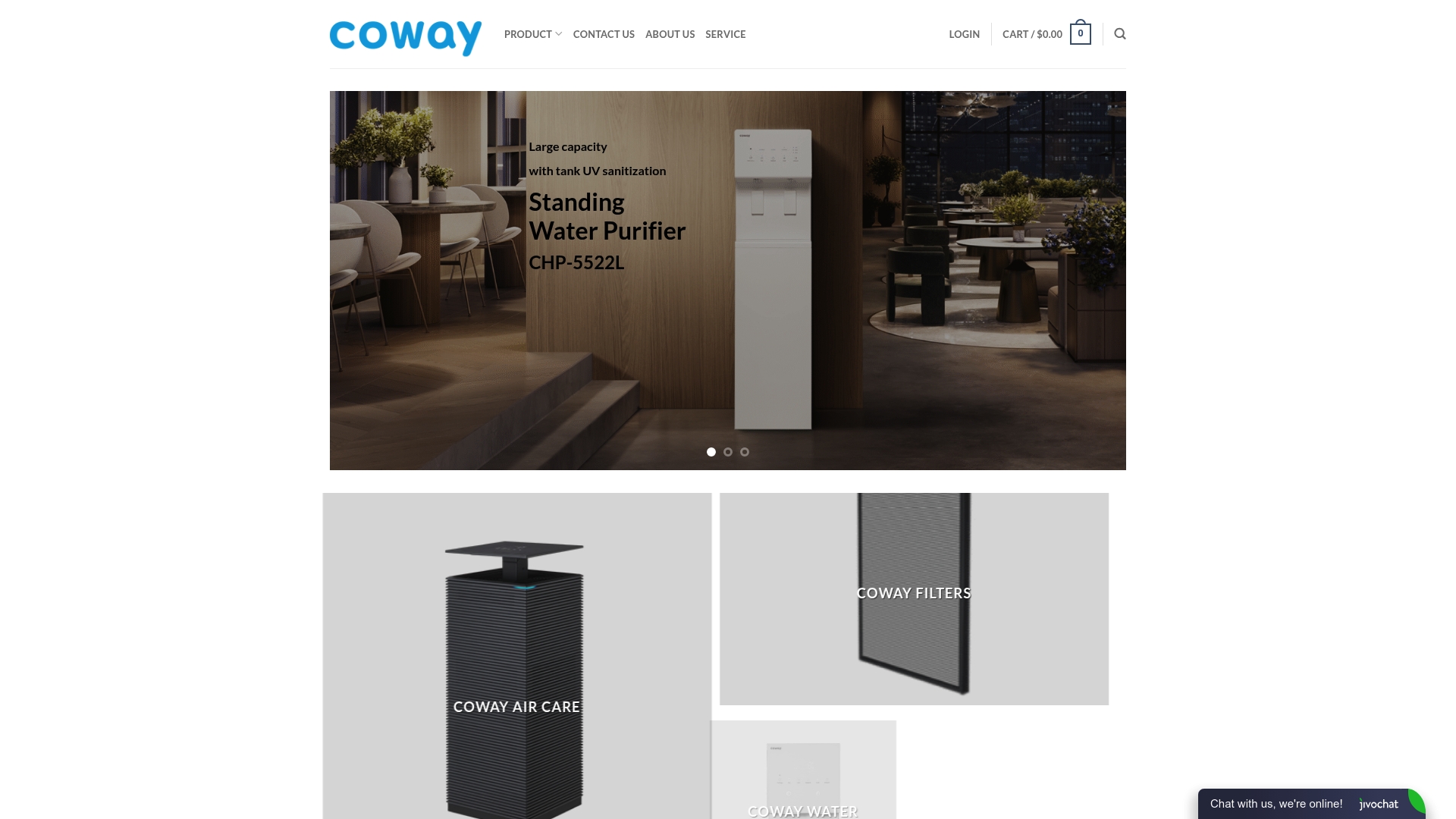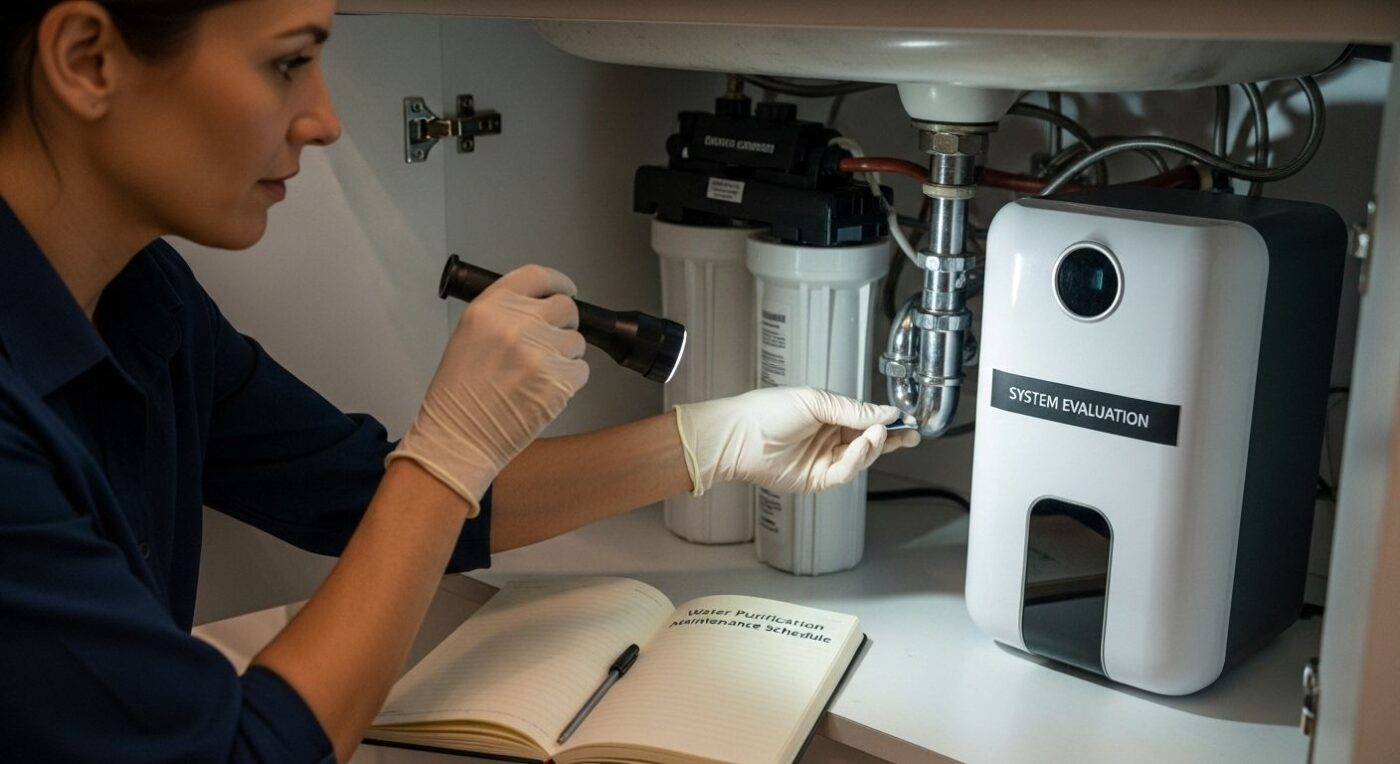Uncategorized
Essential Water Purification Maintenance Schedule for 2025
Most people think a water purification system runs smoothly once installed and forget about it until something goes wrong. Yet, microfractures or subtle wear in seals and connectors can silently compromise water quality without any visible warning. It turns out your system’s biggest threat comes from the smallest, often invisible issues that seem harmless at first glance.
Table of Contents
- Step 1: Evaluate Your Current Water Purification System
- Step 2: Create a Maintenance Checklist
- Step 3: Establish a Regular Maintenance Frequency
- Step 4: Perform Routine Maintenance Tasks
- Step 5: Document and Adjust Your Schedule
Quick Summary
| Key Point | Explanation |
|---|---|
| 1. Conduct a thorough system evaluation | Perform a visual inspection and water quality tests to identify any vulnerabilities or performance issues immediately. |
| 2. Develop a detailed maintenance checklist | Create a structured list categorizing maintenance tasks by frequency to ensure consistent and effective water system care. |
| 3. Establish customized maintenance frequency | Tailor maintenance intervals based on specific system requirements to optimize performance and water quality. |
| 4. Execute routine maintenance tasks diligently | Regularly conduct daily, weekly, and quarterly tasks to maintain system integrity and prevent significant problems. |
| 5. Document and adjust your maintenance schedule | Keep meticulous records of all maintenance activities and adjust procedures based on performance data to enhance system reliability. |
Step 1: Evaluate Your Current Water Purification System
The first critical phase of maintaining an effective water purification system is a comprehensive evaluation of your current setup. This foundational step determines the entire trajectory of your maintenance strategy, helping you identify potential vulnerabilities, performance gaps, and areas requiring immediate attention.
Begin by conducting a thorough visual inspection of your entire water purification infrastructure. Check all visible components including filters, pipes, connectors, and exterior surfaces for signs of wear, corrosion, mineral buildup, or damage. Look closely for any discoloration, leaks, or unusual residue that might indicate system degradation. Pay special attention to areas around connections and seals, where microfractures or subtle wear can compromise water quality without immediate detection.
Your inspection should extend beyond visual assessment. Test your water quality using professional-grade testing kits that measure key parameters such as pH levels, dissolved solids, chlorine content, and potential contaminant presence. Explore our comprehensive guide on water purification methods to understand the nuanced indicators of water system health. These diagnostic tests provide critical insights into your system’s current performance and potential maintenance requirements.
Document everything meticulously. Create a detailed record noting the date of inspection, specific observations, test results, and any components showing signs of potential failure. This documentation serves as a baseline for future maintenance schedules and helps track your water purification system’s long term performance trajectory. By establishing a systematic evaluation process, you transform reactive maintenance into a proactive, strategic approach that ensures consistent water quality and system longevity.
Successful completion of this evaluation step means you have:
- Conducted a comprehensive visual system inspection
- Performed thorough water quality testing
- Created detailed documentation of system condition
- Identified potential maintenance or replacement needs
Remember, a water purification system is only as reliable as its weakest component. Rigorous, consistent evaluation is your primary defense against potential water quality issues.
Step 2: Create a Maintenance Checklist
Developing a comprehensive maintenance checklist transforms your water purification system care from reactive to proactive, establishing a structured approach that prevents potential failures and ensures consistent water quality. This critical step builds directly on your initial system evaluation, translating your diagnostic insights into a strategic maintenance blueprint.
Designing an effective maintenance checklist requires meticulous attention to detail and a systematic approach. Start by categorizing maintenance tasks based on frequency: daily, weekly, monthly, quarterly, and annual activities. Each category will have specific actions targeting different aspects of your water purification system. For instance, daily tasks might include visual inspections and quick performance checks, while quarterly tasks could involve more intensive filter replacements and deep cleaning procedures.
Explore our essential water filter maintenance tips to understand the nuanced requirements of comprehensive system care. Your checklist should incorporate multiple dimensions of maintenance, including physical component inspection, performance testing, cleaning protocols, and replacement schedules. Include specific details such as exact replacement dates for filters, recommended cleaning solutions, and precise testing methodologies.
Consider creating a digital or physical tracking document that allows you to log each maintenance activity. This record serves multiple purposes: it helps you track system performance over time, identifies potential recurring issues, and provides a clear historical maintenance profile. Consistency is key in maintaining water purification system integrity. Use waterproof, durable materials for physical checklists or create a digital spreadsheet with automatic reminders and tracking capabilities.
Your comprehensive maintenance checklist should encompass:
- Detailed task descriptions for each maintenance interval
- Specific components requiring inspection or replacement
- Required tools and cleaning materials
- Recommended testing procedures and performance benchmarks
- Space for recording completion dates and observations
A well-crafted maintenance checklist transforms complex water purification system care into a manageable, systematic process. By investing time in creating a thorough, personalized checklist, you establish a proactive approach that extends your system’s lifespan and guarantees consistently high water quality.
Step 3: Establish a Regular Maintenance Frequency
Establishing a regular maintenance frequency is the pivotal bridge between your comprehensive checklist and actual system performance. This strategic scheduling transforms your water purification maintenance from a theoretical plan into a practical, executable routine that ensures consistent water quality and system longevity.
Maintenance frequency is not a one-size-fits-all approach but a customized strategy tailored to your specific water purification system. Different components require varying levels of attention and intervention. Sediment filters, for instance, might need replacement every three to six months, while more complex multi-stage filtration systems could have more nuanced maintenance requirements. Explore our detailed water filter maintenance tips to understand the intricate details of component-specific care.
Begin by categorizing maintenance tasks into distinct intervals. Daily tasks should involve quick visual inspections and performance checks that take minimal time but provide crucial insights. Weekly tasks might include more comprehensive assessments like pressure testing, preliminary filter condition evaluations, and basic cleaning procedures. Monthly tasks should involve deeper system diagnostics, including detailed component inspections, water quality testing, and preliminary replacement considerations.
Quarterly maintenance represents a more intensive intervention point. This is when you conduct thorough system evaluations, perform comprehensive filter replacements, deep clean intricate system components, and run advanced water quality diagnostic tests. Annual maintenance serves as your system’s comprehensive health check, involving complete system evaluation, potential major component replacements, and extensive performance assessments.
Consider external factors that might necessitate more frequent maintenance. Hard water regions, homes with high sediment levels, or areas with questionable municipal water supplies might require more aggressive maintenance schedules. Your maintenance frequency should remain flexible, adapting to real-world performance data and environmental conditions.
Your maintenance frequency framework should include:
- Clear timeline for each maintenance category (daily, weekly, monthly, quarterly, annual)
- Specific tasks corresponding to each maintenance interval
- Flexibility to adjust based on system performance and environmental conditions
- Documented rationale for each maintenance frequency decision
- Mechanism for tracking and reviewing maintenance effectiveness
By establishing a systematic, well-thought-out maintenance frequency, you transform water purification system care from a reactive chore into a proactive, strategic process that guarantees optimal performance and water quality.
![]()
Step 4: Perform Routine Maintenance Tasks
Routine maintenance tasks are the heartbeat of your water purification system’s long-term performance and reliability. This critical step transforms your carefully crafted maintenance strategy into actionable interventions that protect your water quality and system integrity. The key is systematic, methodical execution of each maintenance task with precision and attention to detail.
Discover essential water filter maintenance tips to enhance your understanding of comprehensive system care. Begin with daily visual inspections, which involve a quick but thorough examination of all system components. Look for any signs of wear, potential leaks, unusual discoloration, or mineral buildup. Check water pressure, observe filter condition, and listen for any abnormal sounds that might indicate underlying mechanical issues. These brief daily checks take only minutes but can prevent significant problems from developing.
Weekly and monthly tasks require more in-depth attention. Sediment and carbon filters need careful examination, checking for signs of clogging or reduced performance. Clean external surfaces using manufacturer-recommended solutions, ensuring no harsh chemicals compromise your system’s integrity. Sanitize filter housings, carefully remove and inspect each component, and verify proper sealing and connection points. Pay special attention to areas prone to mineral deposits or potential bacterial growth, which can compromise water quality if left unchecked.
Quarterly maintenance represents a more comprehensive intervention. This is when you conduct thorough water quality testing, potentially using professional-grade testing kits that measure multiple contaminant levels. Replace filters according to manufacturer specifications, understanding that different components have varying replacement cycles. Conduct pressure tests, verify valve functionality, and perform a complete system diagnostic to ensure all elements are working harmoniously.
Your routine maintenance should include:
- Consistent daily visual system inspections
- Comprehensive weekly and monthly component evaluations
- Quarterly deep cleaning and advanced diagnostic procedures
- Precise filter replacement following manufacturer guidelines
- Detailed documentation of all maintenance activities
Successful routine maintenance transforms your water purification system from a passive infrastructure into an actively managed, high-performance solution.
Below is a checklist table summarizing essential routine maintenance tasks, giving you a quick reference for what to do at each interval.
| Maintenance Interval | Key Tasks | Main Purpose | Documentation Required? |
|---|---|---|---|
| Daily | Visual system inspection | Detect leaks, wear, or discoloration | Optional |
| Weekly | Performance check, clean surfaces | Assess filter/connection condition, basic cleaning | Recommended |
| Monthly | Water quality testing, deeper component inspection | Identify system performance trends, plan replacements | Yes |
| Quarterly | Full system diagnostic, filter replacement, deep clean | Ensure optimal filtration and performance | Yes |
| Annual | Comprehensive evaluation, replace major components | Address long-term wear and renew system integrity | Yes |

Step 5: Document and Adjust Your Schedule
Documentation and continuous schedule adjustment represent the critical final phase of your water purification maintenance strategy. This step transforms your maintenance efforts from a static plan into a dynamic, responsive system that evolves with your specific water quality needs and equipment performance. Precise record-keeping is not just administrative work but a strategic approach to understanding and optimizing your water purification system’s long-term health.
Learn more about comprehensive water maintenance strategies to enhance your documentation approach. Begin by creating a comprehensive digital or physical log that tracks every maintenance activity with meticulous detail. Each entry should include the date, specific tasks performed, components inspected or replaced, water quality test results, and any observations about system performance. Use waterproof, durable notebooks or cloud-based spreadsheet systems that allow easy tracking and historical review.
Your documentation should go beyond simple task completion records. Develop a systematic approach to analyzing maintenance data, looking for patterns, recurring issues, or subtle performance changes that might indicate emerging problems. Track filter replacement frequencies, note any variations in water pressure, and record the results of each water quality test. Pay special attention to seasonal variations or changes in your local water supply that might impact system performance. This analytical approach transforms your maintenance log from a basic record into a predictive tool that helps you anticipate and prevent potential issues.
Schedule adjustment is a continuous process of refinement. Review your maintenance logs quarterly, identifying trends and potential areas for optimization. Are certain components wearing faster than expected? Do water quality tests reveal changing contaminant levels? These insights allow you to modify your maintenance frequency, adjust filter replacement schedules, or invest in additional purification technologies. Flexibility is key – your maintenance schedule should be a living document that adapts to real-world performance data.
Your documentation and adjustment process should include:
- Comprehensive maintenance activity logging
- Systematic performance data analysis
- Quarterly review and schedule refinement
- Tracking of water quality test results
- Mechanism for identifying and responding to system performance variations
Successful documentation and schedule adjustment turns your water purification maintenance from a reactive task into a proactive, intelligent system management approach. By investing time in careful record-keeping and continuous improvement, you ensure optimal water quality and system longevity.
The following table outlines the primary tools and materials recommended for thorough water purification system maintenance, along with their uses as discussed in the article.
| Tool/Material | Recommended Use | Notes |
|---|---|---|
| Visual inspection flashlight | Examine connectors, seals, hard-to-see areas | Look for microfractures or leaks |
| Professional water test kit | Measure pH, dissolved solids, chlorine | Track system performance |
| Cleaning solution | Clean external surfaces and filter housings | Use manufacturer-approved |
| Replacement filters | Swap out old or degraded filters | Follow manufacturer schedule |
| Pressure testing gauge | Check system pressure and performance | Part of regular diagnostics |
| Maintenance log/notebook | Record maintenance dates, test results | Waterproof or digital options |
Maintain Peace of Mind with a Trusted Water Purification Partner
Struggling to keep up with your water purification maintenance in 2025? If you feel overwhelmed by checklists, filter changes, and scheduling, you are not alone. Many people wonder if their system is really protecting their home every day. When your family’s health depends on clean water, proactive maintenance is not enough—you need reliable products and complete support. Our Coway water purifiers are designed for effortless upkeep, advanced purification, and ongoing service that works with your busy life. Learn how our proven solutions and resources make your maintenance schedule easier and safer.

Ready to simplify every step of water purification maintenance? Visit https://cowayswaterpurifier.com now to browse our full range of water and air purifiers, explore service options, and enjoy hassle-free installation and care. Invest in your health today and experience the difference smart, worry-free protection can make.
Frequently Asked Questions
What are the key steps in a water purification maintenance schedule?
The key steps include evaluating your current system, creating a maintenance checklist, establishing a regular maintenance frequency, performing routine maintenance tasks, and documenting and adjusting your schedule.
How often should I perform maintenance on my water purification system?
Maintenance frequency can vary based on the system type, but most households benefit from daily inspections, weekly checks, monthly diagnostics, quarterly deep cleanings, and annual comprehensive evaluations.
What should I include in a water purification maintenance checklist?
Your checklist should include detailed task descriptions for each maintenance interval, specific components to inspect or replace, required tools and cleaning materials, testing procedures, and space for recording completion dates and observations.
Why is documentation important in a water purification maintenance schedule?
Documentation is crucial for tracking system performance, identifying trends, and making necessary adjustments to the maintenance schedule. It helps anticipate potential issues and ensures optimal water quality over time.
Recommended
- 7 Essential Water Filter Maintenance Tips for Homeowners
- What is Water Purification? Understanding Its Importance
- Understanding Water Filter Lifespan
- 7 Effective Water Purification Methods for Your Home

